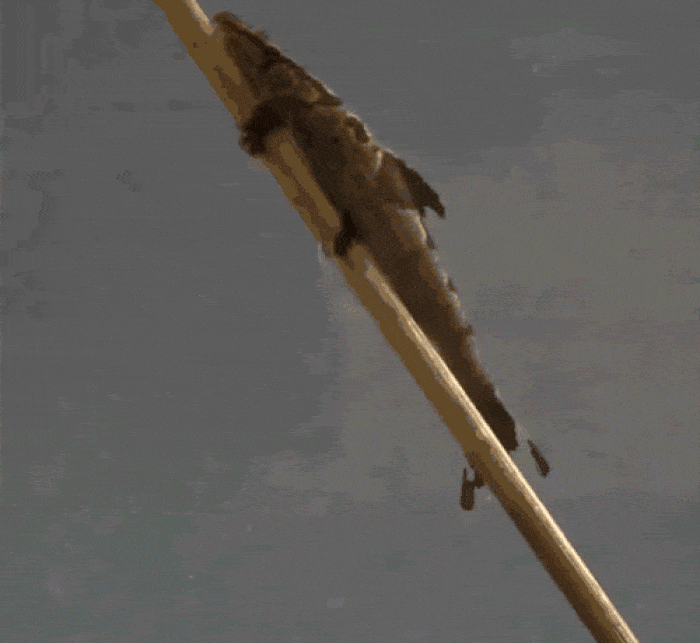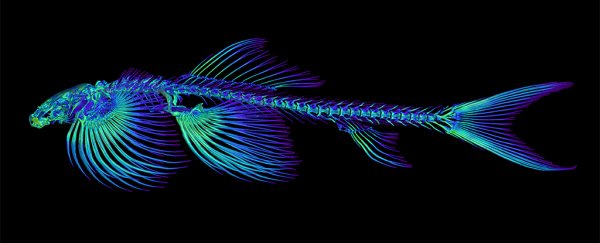At first, the idea of a walking fish sounds ridiculous – but such hybrid creatures have played a key role in the evolution of the animal kingdom on Earth. Now, new research has shown that more fish than we ever realised may be able to walk about on land.
That's according to a detailed study of the skeletons of the hillstream loach fish family in Asia, which includes one species that we already know can walk to some extent – the blind and rare cave angel fish (or Cryptotora thamicola). At least 10 other species probably have the same capabilities, the study shows.
By identifying which species of hillstream loaches can potentially go for a wander on terra firma (ignoring the breathing difficulties for a moment), the researchers hope to learn more about how the very first land-walking vertebrates might have made their way out of the water and onto land.
It's the pelvic girdle – the connection between the spine and the pelvic fin – that's key. The team looked at the bone structure of 29 different species from the hillstream loach group, identifying three different kinds of pelvic shape, and finding that 10 other species shared the same bone connection as Cryptotora thamicola.
"Fishes don't usually have any connection between their spine and pelvic fin," says biologist Zachary Randall from the Florida Museum of Natural History.
"But before, the idea was that the cave angel fish was totally unique. What's really cool about this paper is that it shows with high detail that robust pelvic girdles are more common than we thought in the hillstream loach family."
The cave angel fish uses enlarged ribs and stabilising muscle to get about via a "salamander-like wiggle" that makes use of its fins. It's the only hillstream loach species that's been observed doing something like a walk.
Experts think it evolved the capability as a way of moving through fast-flowing cave streams, and potentially getting to oxygen-rich streams that other fish can't get to. It could even be used to get the fish up a shallow and slight waterfall.

One of the species studied, Homaloptera bilineata, using its fins to propel itself forward. (Florida Museum/Zachary Randall)
Through a combination of DNA analysis and computed tomography (CT) scans, the researchers found evidence that the abilities had been passed on genetically, and were shared with other members of the hillstream loach family. It doesn't seem to have evolved from just a single source.
All of which gives biologists a much more accurate evolutionary family tree when it comes to walking fish – and a framework to try and identify more of them in the future, though the level of walking skill is likely to vary from species to species.
"This study brought together a team of researchers with interests and levels of expertise that varied from those of us who do fieldwork and study fishes in their natural habitats, to geneticists, to comparative anatomists," says biologist Lawrence Page from the Florida Museum of Natural History.
"The result is a greatly improved understanding of the evolution of an extremely uncommon event – the ability of a fish to walk on land."
The research has been published in the Journal of Morphology.
